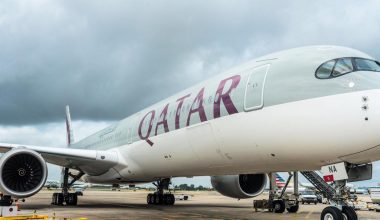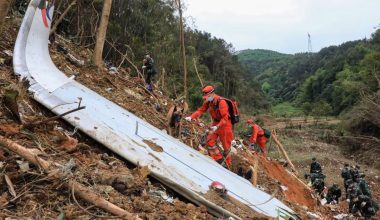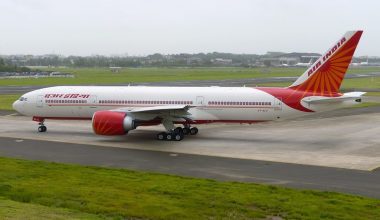If you have a zeal for flying an aircraft, getting a pilot’s license is the key to unlocking your flying passion and take aviation career off the ground. Whether you pursue flying as a hobby or a job, various pilot licenses are suited to your needs. When holding a pilot license, will you be familiar with the acronyms PPL and CPL? What are PPL and CPL? What is the difference between PPL and CPL?
What is PPL?
PPL stands for Private Pilot License and refers to a permit issued by the Civil Aviation Authority of a particular country that allows the holder to fly a small airplane privately at a controlled airport through the country’s airspace. A private Pilot License is for you if you are a recreational flyer or a professional business undertaking a lot of travel. With PPL, you can navigate single-engine airplanes for your own needs, including weekend getaways, attending business meetings, getting flying pleasure, etc. PPL is the go-to for flying enthusiasts who seek the adventure of seeing the world without substantial limits on traveling. Unlike sport pilot licenses, PPL holders enjoy fewer restrictions and can break the set-mile radius of their takeoff point.

As a private pilot, you can’t make money from flying for compensation or hire, but it is possible to engage in various remarkable pursuits like:
Also Read: Dreamt of becoming a pilot? How to become a pilot from Nepal?
- Soar above the clouds and get an incredibly unique experience
- Follow your flying hobby (including balloons, gliders, and powered flights)
- Fly your friends and families into wild blue yonders
- Fly own plane to attend business meetings
- Secure ground instructor job to teach aviation theory, conduct ground training, and share own experience
- Volunteer charitable services like search and rescue, fire-spotting, disaster relief
- Tow gliders and unpowered ultralights to make some money
Apart from pleasure or hobby flights, Private Pilot License lays the foundation for your flying journey to becoming an airline pilot. PPL is the first major milestone or a benchmark that paves your path to the airline pilot profession. The road to a commercial airline career starts with the acquisition of PPL. Flying solo or with non-commercial passengers with a PPL license is an ingenious way to clock in aeronautical flight experience toward a Commercial Pilot License (CPL).
While flying passengers or property for compensation or hire with PPL is out of the question, you can earn money as a private pilot by leveraging your flying experience, working as an instructor for instrument ground training, towing gliders, and ultralight, and leasing the aircraft to flight schools.
Who gets PPL?
In the US, Federal Aviation Administration (FAA) issues PPL to aspiring qualified students who adhere to and fulfill the following requirements:
- At least 17 years of age
- Holder of Student Pilot Certificate, Sports Pilot Certificate, or Recreational Pilot Certificate
- Proficient in English reading, speaking, and writing
- Receive flight training and log in at least 40 hours of flight time, including 3 hours of a cross-country flight, 3 hours of night flight, 3 hours of instrument training, 3 hours of training with an authorized instructor, and 10 hours of flying aircraft solo.
- Complete written exam knowledge and pass practical test for airplane rating sought
Rather than personal flying, if you seek to pursue flying as a professional career, holding a PPL won’t suffice, and advancing to CPL becomes essential.
What is CPL?
In aviation, CPL stands for Commercial Pilot License and refers to a legal authorization issued by the country’s civil aviation agency that allows the holder to act as a pilot-in-command of an aircraft for compensation or hire. The acquisition of CPL is a massive feat in a flying career because it involves significant commitment with much more stringent regulations, higher financial investment, increased flight hour requirements, and more thorough medical tests than PPL.
Also Read: How long does it take to become a captain in an airline?
As a commercial pilot license holder, you can earn a living by transporting cargo and passengers for compensation or hire. A CPL license opens the door for a slew of privileges like
- Monetary remuneration for carrying people and property
- Fly for private and commercial operations
- Fly on behalf of owners or operators to exotic locales
- Perform tasks like crop dusting, banner towing, air charter, etc.
- Work for TV or radio stations, traffic reporting agencies
- Become a certified flight instructor to build valuable flight experience
CPL is a remarkable achievement in your flying career as you sharpen your flying skills, master comprehensive technical and operational knowledge, and accumulate more flight hours. To earn FAA CPL License, you must comply with stringent federal regulations and fulfill the set requirements, which involve:

- Minimum age of 18 years
- Fluent in reading, speaking, and writing the English Language
- Hold a PPL
- Pass commercial pilot knowledge and practical test
- Accumulate a minimum aeronautical flight experience of 250 hours
- Possess an FAA second-or first-class medical certificate
You can exercise the privilege of a CPL license by acting as a pilot in charge in a solo aircraft or as a co-pilot in multi-crew aircraft. Remember that CPL is not the highest level of pilot certificate you achieve in your flying career, but it is a crucial step to move up the ladder into the airline pilot profession. You need Airline Transport Pilot License (ATPL) to land rewarding jobs in major airlines like Delta, American Airlines, United, etc.
Can you get CPL without PPL?
According to federal regulations, you can’t get FAA Commercial Pilot Certificate without holding a valid Private Pilot License (PPL). To bag the dream job as a commercial pilot, you must first acquire a private pilot license (PPL) and then a Commercial Pilot License (CPL). The ATP Certificate marks the final milestone in the road to pursuing a career as a civil airplane pilot. However, there is a special provision for a US military pilot or former military pilot who meets the requirement of section 61.73 to apply for the commercial pilot certificate with the proper aircraft category and type rating.
A CPL is a more advanced PPL involving in-depth flying skills, intense training, serious instructions, and greater financial investment. If you want to build a more serious career in flying rather than just flying for fun, you can upgrade the pilot license from PPL to CPL.
International Civil Aviation Organization (ICAO), the UN aviation watchdog, has attributed PPL as a requirement to be eligible for a commercial pilot license. However, getting CPL with/without PPL may vary from country to country.
What does PPL to CPL cost?
For many pilots, PPL is a beginning certification but upgrading PPL to CPL is possible by adding more flight hours, undertaking more rigorous training, and completing CAX and checkride tests.
While the initial cost of earning a Private Pilot Certificate is lower, advancing the PPL to CPL involves a huge investment. The cost of a Private Pilot License (PPL) varies according to the course duration and flight schools and may range between $10000 and $20000. Starting with a private pilot certificate, it will cost above $50000 to become a commercial pilot depending on the single or multi-engine.
What are PPL and CPL courses?
PPL courses are less intensive than CPL but involve basic learning in areas like aerodynamics, meteorology, aviation rules and regulations, aircraft systems, navigation, radio procedures, and flight controls. It requires both ground school classes and actual flight training to earn PPL. The PPL course duration requires a time commitment of normally 90 days but can stretch to 4-6 months, depending on the student’s available schedule.

Like PPL, CPL also includes theoretical and practical exercises that offer comprehensive system knowledge, technical skills, and in-depth learning of the aviation industry. Like PPL, CPL courses cover extensive learning on aircraft functions and operating systems, air regulations, aviation meteorology, general and specific, radio telephony, air navigation, etc. You may complete the CPL course within five months.
Difference between PPL and CPL
The obvious difference between PPL and CPL lies in their full forms. PPL suits those who wish to fly only for pleasure and recreation. On the contrary, CPL is issued to those who wish to build their career in aviation and make a living off their flying skills.
Another main basis for the difference between PPL and CPL is financial compensation. You can’t make a living with a PPL license, but on the other hand, CPL is the first step to making financial earnings in your flying career as you get paid to operate the aircraft.
The minimum age bar for PPL is 17 years, while you must be at least 18 years of age to qualify for Commercial Pilot License.
CPL is an advanced pilot training certification, while PPL is a beginning certification for most pilots. A private Pilot Certificate leads to Commercial Pilot Certificate.
Another difference between PPL and CPL lies in their purposes. PPL allows you to travel solo or take families on a fun trip, operate charitable flights or non-commercial aircraft, and continue your flying hobby. CPL is more professional and enables you to operate aircraft for monetary compensation; for both private and commercial purposes.






